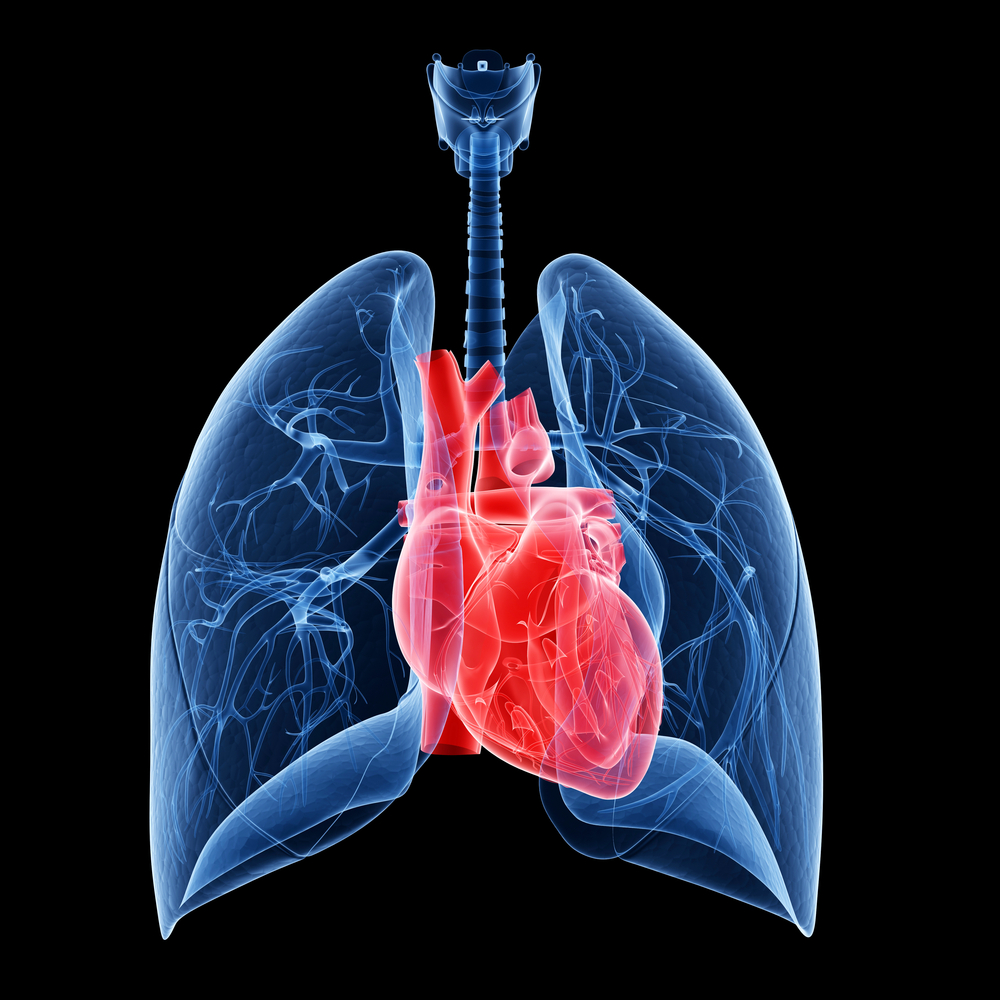Two Non-Invasive Tests Predict PAH Prognosis in Patients with Congenital Heart Disease, Study Reveals

Only two non-invasive diagnostic tests are required to best predict the risk of adverse events in people with congenital heart disease (CHD)-associated pulmonary arterial hypertension (PAH), a new study suggests.
The study, “Guideline implementation and early risk assessment in pulmonary arterial hypertension associated with congenital heart disease: A retrospective cohort study,” was published in The Clinical Respiratory Journal.
PAH is a type of pulmonary hypertension (PH) characterized by the narrowing of the pulmonary arteries that transport blood through the lungs, which restricts blood flow and causes high blood pressure (hypertension).
There are many potential causes of PAH, including other diseases. In Asia, the primary cause of PAH is congenital heart disease (CHD), which is a group of one or more developmental abnormalities in the structure of the heart that can alter the way blood flows.
The guidelines for PAH diagnosis and treatment are based on recommendations by the 2015 European Society of Cardiology (ESC) and the European Respiratory Society (ERS). They recommend a series of tests to identify the risks of poor prognosis, or the expected course of a disease. Patients are divided into risk groups — low, intermediate, and high — to apply the best treatment strategy for their individual case.
Interested in PH research? Check out our forums and join the conversation!
While these guidelines provide general recommendations for PAH patients, specific criteria for people with CHD-associated PAH is lacking.
Researchers in China evaluated which recommended tests from the guidelines provide the best possible risk assessment for people with CHD-PAH. They analyzed the medical records of 288 CDH-PAH patients who had been treated at the Wuhan Asia Heart Hospital, in China, between January 2014 and December 2016.
After excluding those who were below age 18, had PAH reversed by CHD treatment, or who had incomplete data, a total of 105 patients were evaluated in the study.
The team collected information on age, gender, body mass index (BMI), and WHO/NYHA functional class, a heart failure classification. Hemodynamic measurements were obtained, including right atrial pressure, mean pulmonary artery pressure, cardiac output, cardiac index, pulmonary vascular resistance index, heart rate, and mixed venous oxygen saturation SvO2.
Further, results from the 6-minute walking distance (6MWD) test were collected to assess exercise capacity. The scientists also evaluated markers for hypertension and heart disease from blood tests — including white blood cell count, serum creatinine, alanine aminotransferase, aspartate aminotransferase, and N‐terminal prohormone of brain natriuretic peptide (NT‐proBNP).
To identify which of these test criteria best predicted CHD-PAH patient outcomes after a 12-month follow-up, researchers compared the data between individuals who experienced adverse events (AEs) and those who did not. AEs were defined as PAH worsening that required hospitalization, events that required new or combination treatments, and death.
In total, 29 patients were found to have had AEs.
A statistical analysis of each of the test criteria individually revealed that the best prognosis — with less AEs — occurred in patients who were in the WHO/NYHA functional classes I and II, had a 6MWD of more than 440 meters, NT-proBNP levels less than 300 pg/ml, and SvO2 levels greater than 65%. These results were independent of age, gender, or BMI.
However, when comparing all the data together, only the 6-minute walking distance (6MWD) test, and the individual’s N‐terminal prohormone of brain natriuretic peptide (NT-proBNP) levels best predicted the outcome for CHD-PAH.
A risk assessment was then calculated based on these two test criteria. People who had both a 6MWD greater than 440 meters, and NT-proBNP levels less than 300 pg/ml, had the least number of AEs. In fact, there was a 97% AE‐free survival rate during one‐year follow‐up.
Patients who reached only one of these criteria had a 5-fold increase in AE risk, with AE‐free survival reduced to 88%. Those who failed to meet either test criteria had a 35-fold increase in the risk of AEs. Only 37% of these patients were AE‐free during follow‐up.
Overall, the results from this analysis demonstrated that only two tests, both non-invasive — a walking test and a blood test — were able to predict the 12-month AE outcome in patients with CHD-PAH.
“Among the low‐risk criteria proposed by current guidelines, 6MWD and NT‐proBNP predicted AEs independently for PAH‐CHD patients. Simplified risk stratification system by taking these two parameters numerically provides accurate prognostic information in PAH‐CHD patients,” the team concluded.







